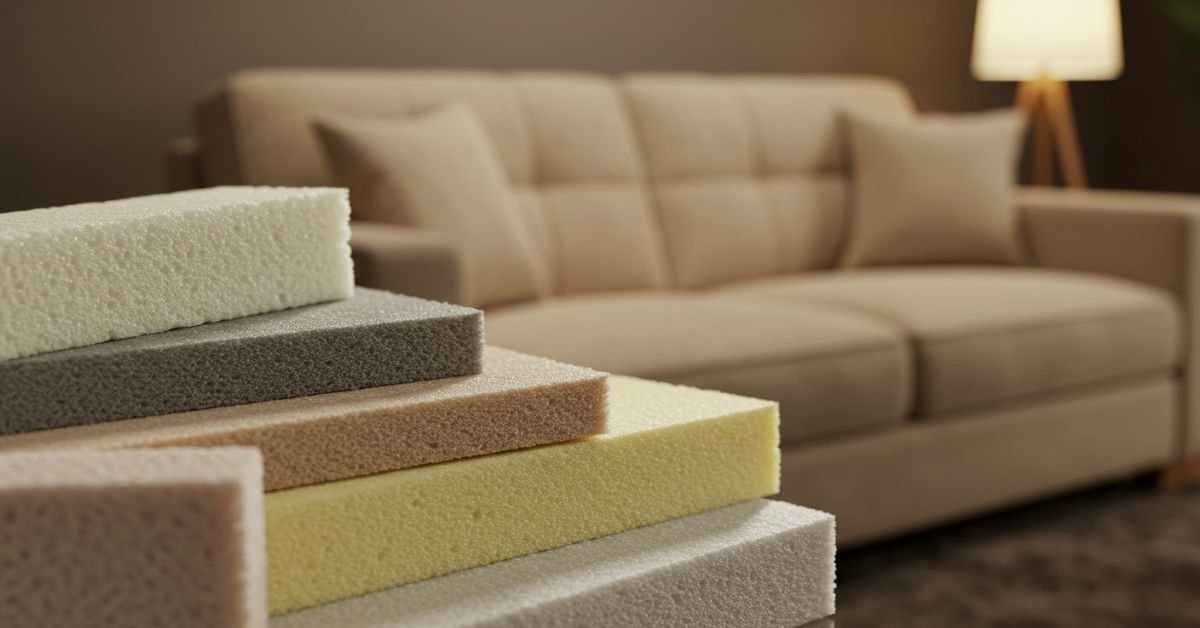When it comes to sofas, comfort is king. But did you know that the secret to a cozy couch often lies in its foam?
Foam might not be the first thing that pops into your mind when you’re searching for the perfect sofa, but it plays a crucial role in determining how your furniture feels and lasts over time. With various types of foam available, choosing the right one can feel overwhelming.
Don’t worry; we’re here to guide you through this essential aspect of sofa shopping.
Whether you’re redecorating or simply looking for an upgrade, understanding foam will empower you to make informed decisions. From durability to support levels, let’s dive into everything you need to know about foam for sofas!
What is foam and why is it important for sofas?
Foam is a versatile material made from polyurethane or other polymers. It’s designed to provide cushioning and support, making it an essential component of any sofa.
The importance of foam lies in its ability to absorb pressure and conform to your body shape. This means you can sink into your sofa without feeling like you’re sitting on a hard surface. It enhances comfort during long hours of lounging or entertaining guests.
Moreover, different densities and types of foam contribute to the overall durability of the furniture. High-quality foam will maintain its structure over time, ensuring your investment lasts for years.
When selecting a sofa, understanding how foam affects both comfort and longevity can lead you to make better choices that suit your lifestyle.
Different types of foam and their qualities
Foam comes in various types, each with distinct qualities. Memory foam is popular for its contouring properties. It molds to the body’s shape, providing excellent support and relief from pressure points.
Polyurethane foam is another common choice. It’s versatile and available in different densities. This type can be firm or soft, making it suitable for a range of sofa designs.
Latex foam stands out for its durability and natural composition. It offers a bouncier feel while being environmentally friendly.
High-resilience (HR) foam provides enhanced comfort with greater resilience over time. Its ability to bounce back makes it an ideal option for high-traffic furniture.
Gel-infused foams combine traditional materials with cooling technology. They help regulate temperature while maintaining comfort levels during use. Each variety has unique benefits suited to specific needs and preferences.
How to choose the right foam for your sofa
Choosing the right foam for your sofa can transform comfort and longevity. Start by considering density. Higher density foams generally offer more support and durability, making them ideal for regular use.
Next, think about firmness levels. Softer foams are cozy but may wear out faster, while firmer options provide better resilience. Test different types to see what feels best.
Don’t overlook the purpose of your sofa. If it’s a family gathering spot or pet-friendly zone, opt for durable materials that withstand everyday life.
Also consider temperature regulation; some foams trap heat while others remain cooler. This is especially important in warmer climates or if you prefer a chilly seating experience.
Pay attention to certifications like CertiPUR-US to ensure you’re selecting safe and environmentally friendly products. The right foam not only enhances comfort but also aligns with your lifestyle needs.
Tips for Maintaining Foam in Sofas
Regular Cleaning
To keep foam in sofas looking and feeling fresh, start with regular cleaning. Vacuuming the surface removes dust and debris that can degrade the foam over time.
Avoid Sunlight Exposure
Avoid exposing your sofa to direct sunlight for long periods. UV rays can cause fading and weaken the material, leading to premature deterioration.
Handle Spills Promptly
If spills occur, tackle them promptly. Blot stains gently with a clean cloth instead of rubbing. This helps prevent deeper penetration into the foam.
Rotate Cushions Periodically
Consider rotating cushions periodically. This practice ensures even wear, extending their lifespan significantly.
Use Protective Covers
For added comfort, use protective covers. They act as a barrier against dirt and grime while also providing an extra layer of cushion when needed.
Ensure Proper Structural Support
Ensure proper support beneath your sofa’s structure. A sturdy frame prevents sagging and maintains optimal foam performance over time.
Alternatives to traditional foam
When considering alternatives to traditional foam, natural materials come into play. One popular choice is latex. Derived from rubber trees, it offers excellent durability and resilience. Latex provides a supportive feel while being eco-friendly.
Another option is memory fiber. This innovative material mimics the contouring properties of memory foam but eliminates some environmental concerns associated with synthetic options. It adapts to body shapes without retaining heat excessively.
For those seeking sustainable solutions, recycled materials are gaining traction in furniture design. These can include shredded fabric or even repurposed plastics that provide cushioning support while reducing waste.
Wool serves as another alternative worth mentioning. Naturally breathable and moisture-wicking, wool adds comfort and temperature regulation to your sofa seating experience without compromising style or aesthetics. Each of these options brings unique qualities that cater to varying preferences and needs.
Also Read: How To Clean A Fabric Sofa
The future of foam in furniture design
The future of foam in furniture design is set to be transformative. Innovations are driving the development of eco-friendly options that prioritize sustainability without sacrificing comfort.
Smart foams embedded with sensors could enhance user experience. Imagine a sofa that adjusts its firmness based on your posture or weight distribution, providing personalized support.
Moreover, the integration of biodegradable materials is gaining traction. Designers are exploring plant-based alternatives that reduce environmental impact while maintaining durability and aesthetic appeal.
Additionally, advancements in 3D printing technology may revolutionize how we create foam shapes and designs. This opens up limitless possibilities for customizability and unique forms that cater to individual tastes.
As consumers become more discerning about health and wellness, hypoallergenic foams will likely rise in popularity. The focus on creating safer living spaces aligns perfectly with modern lifestyles.

